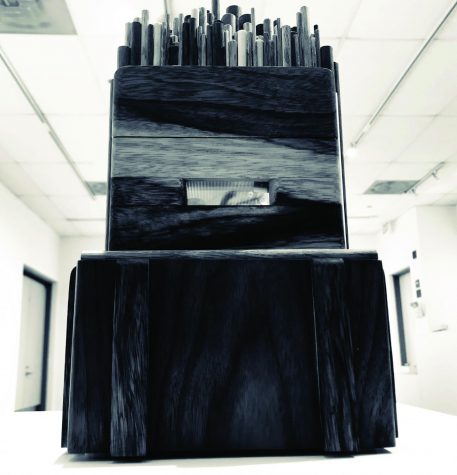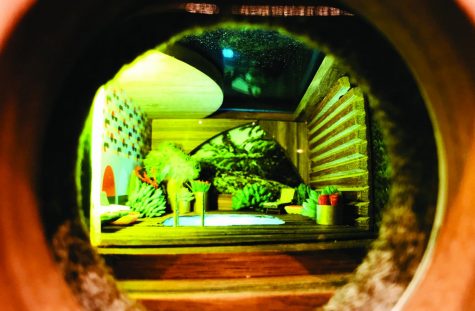Margie Criner’s sculptures explore nostalgia, secrecy
February 25, 2020
Through the end of February, the NEIU Fine Arts Gallery will display “Hide & Seek,” a compilation of sculptor Margie Criner’s fondest and most impactful childhood secrets.
Featuring miniature displays meticulously placed inside larger wooden structures, Criner hopes to manipulate perception and activate curiosity. Muted from afar, each piece offers viewers a second perspective should they care to inspect a little closer.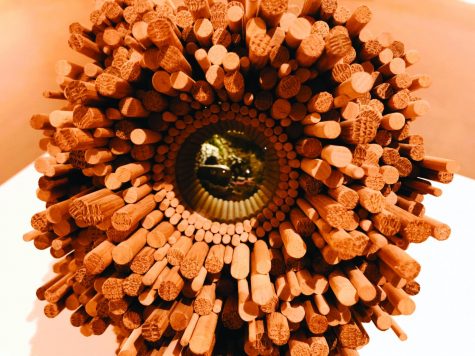
Criner’s work is open to interpretation. While each of Criner’s pieces are inspired by her own childhood experiences, Criner purposely leaves her work abstract enough to inspire contemplation.
“They’re generally stories from my childhood,” said Criner. “Memories, dreams I had or vacations. But also they are open-ended so that the viewer can put in their own memory or stories. I don’t want to be super heavy-handed. I want other people to relate to it and not just be a voyeur.”
Criner challenges her audience to first view her pieces from a distance before examining the inner artwork. She asks her audience to appreciate the designs of the outer structure before experiencing the homeliness and tranquility afforded by the perception of secrecy. “Lean in and get more intimate with the work by peeking through the portal and seeing the narrative inside,” suggests Criner.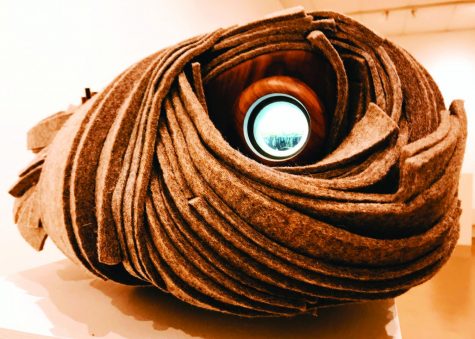
Once viewers advance beyond the wooden casing, they are greeted by Criner’s interpretation of a miniature world, one that is either elongated or abbreviated through the use of painstakingly positioned mirrors. The experience is illustrative of the beauty of patience and scrutiny.
“Hide & Seek” is suggestive of the seduction of privacy, a concept probed by sociologist Erving Goffman, whose theory of the performed self contends that people wear proverbial masks to guard our inner selves.
Each of Criner’s pieces showcases a formidable wooden structure that jealously guards her formative memories. Only by peering through the minuscule window offered by Criner are viewers able to penetrate Criner’s–and by extension their own–faintest memories.
However, despite only serving as a brief escape from reality, “Hide & Seek” allows viewers to appreciate the lure of nostalgia by living vicariously through Criner. Her work represents a reprieve from everyday stressors as viewers plunge headfirst into Criner’s subconscious.
Criner describes her inspiration as a wistful deviation from the redundancy of routine. Citing a piece titled “Far From Home,” Criner explains the significance of a swimming pool, which she describes as representative of “a vacation getting away from your chaotic everyday life.”
Criner credits “Far From Home” with exploring the malleability of time, place and experience. Our agents of socialization directly impact our understanding of the piece, according to Criner, who shared her experience of crossing a hazardous suspension bridge as a child, which she says would be “a liability” by today’s standards.
“I was scared to death and my dad said, ‘Just go hand over hand across the bridge and hold the rope,’” shared Criner. “It took me 40 minutes to get from one end to the other. Then I was excited that I did it so I did it the other way back. Eventually, I was running back and forth across the bridge and it was a moment that I went, ‘I conquered my fears!’ It changed the way I looked at my own limitations.”
Free-spirited and full of laughter, Criner’s art mirrors her escape from the standards of her “domineering” mother. According to Criner, her mother was very protective of her own comfort zone, imposing her own parameters onto her children. “I can speak for my siblings, we really didn’t challenge my mom,” laughed Criner.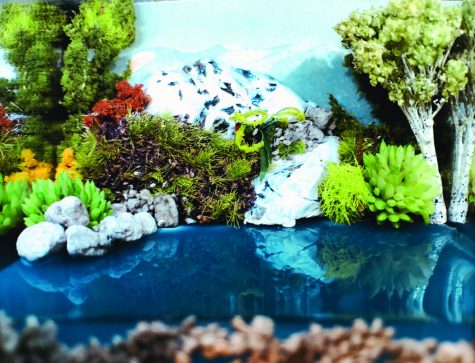
Criner uses her learned confidence to expand her own boundaries. Striving to confront the standards of conventional art, Criner dismisses the notion that fear dictates choice. Her departure from “practical artwork” represents her personal maturation. By embracing risk and rejecting conventional wisdom, Criner affords herself an infinite canvas to explore her artistic genius. And as her beautiful miniature displays offer a vivid world inside a wooden home, Criner’s artistic courage is on full display.
“[My experiences] taught me to not put fear in the driver’s seat. It’s okay to be afraid, but that does not mean that fear has to drive the car. I could be afraid and still move forward in life.”